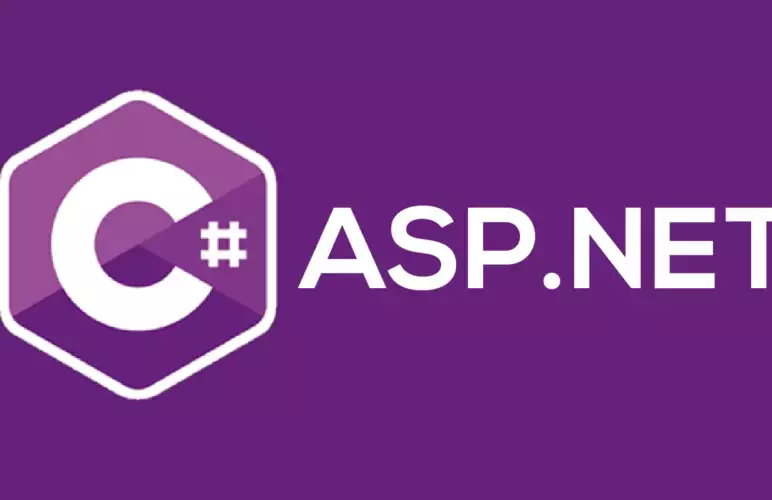GPU vs CPU: An In-Depth Analysis of Processing Units

In the computer world, every server and operating system have a key component at their core—the Central Processing Unit (CPU). This part is like the engine, powering various computing tasks and essential logical functions to ensure smooth operation of operating systems and applications.
On the flip side, Graphics Processing Units (GPUs) are computer specialists designed to handle complex math operations that happen at the same time on many cores. They are experts in efficiently managing demanding tasks, especially those related to graphics and visual processing.
Jump To...
Therefore, it’s important to grasp the subtle differences and similarities between these processing units because they significantly impact how well processors perform in different applications.
This blog delves into the intricate details of GPUs and CPUs, exploring their core components, key differences, and real-world applications.
Distinguishing Between CPUs and GPUs - What Sets Them Apart?
Ever wondered how your computer gets things done? Let’s meet the superheroes behind the scenes: CPUs and GPUs! These silicon-based microprocessors are like siblings—related but with unique powers.

Introducing the CPU:
Imagine the CPU as the multitasking superhero of your computer. Made up of millions of transistors, the CPU, often referred to as the computer’s brain, can have multiple processing cores.
It’s really important for all modern computers because it performs the necessary commands and processes for your computer and operating system. The main job of the CPU is to take instructions from RAM, decode them, and carry out the tasks specified by those instructions.
Whether you’re playing a game or handling a complicated spreadsheet, the CPU is your go-to for tasks that need quick thinking and agile performance. It’s like your digital problem solver!
Now, Introduce the GPU:
Imagine the Graphics Processing Unit (GPU) as the artist in the tech world, originally designed to bring life to your games and graphics. But here’s the cool part – over time, it has become a shape-shifter! While it still excels at creating breathtaking visuals, the GPU has also learned some new tricks.
It’s like transforming your artist into a superhero – now, it’s not only about graphics; it’s also about handling many other tasks at the same time. So, apart from making your game look fantastic, it can also take on other jobs, turning into a multitasking maestro in its own right!
In simple terms, CPUs and GPUs are like the dynamic duo of your device. The main difference in their architecture is that a CPU is crafted to handle various tasks quickly (measured by its clock speed). However, its ability to handle multiple tasks simultaneously is limited. On the other hand, a GPU is designed to rapidly deliver high-resolution images and videos at the same time.
One is the quick problem-solver, and the other is the multitasking artist, working together to create the magic that brings your digital world to life!
Commonalities Between GPUs and CPUs?
CPU and GPU Cores: Regard Them as the Processing Units.
Both CPUs and GPUs serve as the brains of your computer. They contain cores responsible for thinking and handling tasks. Over time, we’ve progressed from having a single core in one brain (CPU) to having multiple cores in both CPUs and GPUs.
Memory Handling: Swift Information Access
Both units require memory to operate quickly. The cache serves as a fast-access memory that aids them in processing data rapidly. CPUs come with L1, L2, and L3 caches, each offering different speeds, while GPUs utilize a parallel memory setup for efficient data handling.
Control Unit Coordination: Synchronizing Task Execution
The control unit acts like a conductor, ensuring everything stays in sync and determining how fast the processor operates. Faster processors generally deliver better performance than slower ones. Because CPUs and GPUs are designed differently, they excel in handling different types of tasks.
Deciphering the Distinction: CPU and GPU Differences

Central Processing Unit (CPU): The Multitasking Powerhouse.
CPUs are the all-rounders, essential for the overall functioning of your computer. On the other hand, GPUs partner with CPUs to tackle multiple tasks simultaneously, acting like speedsters that break down and complete repetitive tasks concurrently.
The role of a CPU remains irreplaceable, as its inherent architecture manages overall computing tasks. GPUs, instead of replacing CPUs, act as collaborative companions, handling repetitive computations in parallel. This teamwork optimizes performance, allowing the CPU to concentrate on the primary program and enhancing overall computational efficiency.
Revealing the Design: Parallel Ballet of Graphics Processing Unit (GPU).
With their numerous cores or Arithmetic Logic Units (ALUs), GPUs specialize in parallel computing. Unlike the sequential processing approach of a CPU, a GPU deviates from tradition by breaking down tasks and executing them independently. Despite being smaller than CPUs, GPUs have a significantly higher number of cores.
Even though each GPU core has lower power, GPUs collectively outperform CPUs in parallel processing. With their multitude of cores, GPUs excel in efficiently handling numerous simultaneous numerical and graphical operations. Consequently, GPUs are most effective for tasks involving repetitive and highly parallel computing.
Technical Perspective: Distinguishing Between CPUs and GPUs.
Architecture and Cores: CPUs are designed for versatility, handling a variety of workloads with a focus on per-core performance. Meanwhile, with their many cores, GPUs excel in parallel processing, making them efficient for tasks requiring simultaneous calculations.
Speed and Size: CPUs are versatile but operate at lower speeds, catering to various tasks. In contrast, GPUs, despite being larger in physical size, boast higher speeds and excel in tasks that require massive parallelism.
Use Cases: With their broad instruction sets, CPUs are ideal for tasks such as running databases and managing diverse workloads. On the other hand, GPUs, evolving from graphics rendering to general-purpose parallel processors, have become integral to machine learning and scientific computations.
Parallelism Advantage: CPUs offer limited parallelism, whereas GPUs, with thousands of cores, efficiently handle multiple parallel operations.
Delving Deeper: A Technical Exploration Beyond the Basics.
Processing Speed: GPUs process data significantly faster than CPUs due to their massive parallelism, making them ideal for specific tasks such as video transcoding and complex mathematical calculations.
Versatility vs. Specialization: CPUs, with their large instruction sets, are versatile but lack the specialization found in GPUs, which excel in specific, parallelized tasks.
Emerging Trends: While GPUs were once the preferred choice for cryptocurrency mining, emerging hardware such as Field-Programmable Gate Arrays (FPGA) and Application-Specific Integrated Circuits (ASIC) are now taking the lead.
Real-World Instances: The Intersection of CPU and GPU Prowess.
Video Rendering: GPUs accelerate video transcoding, significantly speeding up format conversions compared to relying solely on CPUs.
Data Acceleration: GPUs shine in handling intricate mathematical calculations, taking over tasks from CPUs and enhancing the overall efficiency of the system.
Cryptocurrency Mining: GPUs excel in complex mathematical calculations, offloading tasks from CPUs and boosting overall system efficiency.
Taking the Lead with GPUs

Deep Learning Assignments: Instructing Computers in the Art of Learning
Deep learning involves using artificial intelligence to teach computers to think like humans. GPUs excel at handling the complex and repetitive calculations required for this, making them essential for tasks that involve deep learning algorithms, such as machine learning and neural networks.
High-Performance Computing: Empowering Large-Scale Tasks
GPUs excel in tasks requiring substantial computing power, such as scientific or financial simulations. Their ability to handle many concurrent calculations simultaneously makes them ideal for these high-performance computing tasks.
Autonomous Vehicles: Driving Toward the Future.
Creating advanced driver-assistance systems (ADAS) and autonomous vehicles demands significant computing power. GPUs play a vital role in efficiently managing tasks such as data collection, algorithm development, and simulations in this context.
Conclusion
The question is, what do CPUs and GPUs represent as technology advances? Understanding when to leverage their unique strengths empowers users to maximize their computer’s capabilities. The collaboration of CPUs and GPUs ensures that computing power continues to advance, promising an exciting future where both big and small tasks can be easily handled.
Frequently Asked Questions
Yes, HEAVY.AI is compatible with both CPUs and GPUs, providing the flexibility to harness the processing capabilities of both central processing units (CPUs) and graphics processing units (GPUs) available to us. Utilizing the cores of CPUs and the resources of GPUs enhances the efficiency and performance of tasks performed on the HEAVY.AI platform.
While integrated GPUs handle numerous computing tasks well, opting for a discrete GPU, commonly known as a dedicated graphics card, proves advantageous for resource-intensive activities. For example, gamers and graphic designers demand significant visual processing power to run the latest games or create intricate graphics. The majority of contemporary graphics cards meet the baseline gaming specifications for a 1080p monitor resolution.
Conversely, individuals primarily involved in simpler tasks such as web browsing might find the necessity for a discrete GPU minimal, as the capabilities of an integrated GPU could meet their needs. The crucial factor lies in discerning the specific performance requirements of your computing endeavors.
The roles of the CPU and GPU are pivotal in PC gaming, with their importance varying based on the specific requirements of your games.
Unlike the CPU, which is essential for graphically demanding games, the GPU handles rendering tasks and image processing. A robust GPU is indispensable for managing intricate graphics, realistic textures, and sophisticated lighting in visually stunning games like “Cyberpunk 2077” and “Shadow of the Tomb Raider.”
However, achieving an optimal system involves finding a balance. Some games may derive benefits from a potent CPU, particularly those featuring complex artificial intelligence, physics simulations, or expansive environments. For instance, games like “Total War: Three Kingdoms” demand a formidable CPU to handle intricate AI-driven strategies and simulate detailed battlefield interactions during large-scale battles.
Why is the Memory Management Unit (MMU) crucial for organizing memory and caching operations, usually situated on the CPU? Acting as an intermediary in the fetch-decode-execute cycle, it proficiently transfers data between the CPU and RAM as necessary. As a result, the MMU improves overall system performance by enabling efficient communication between the Central Processing Unit (CPU) and memory.



